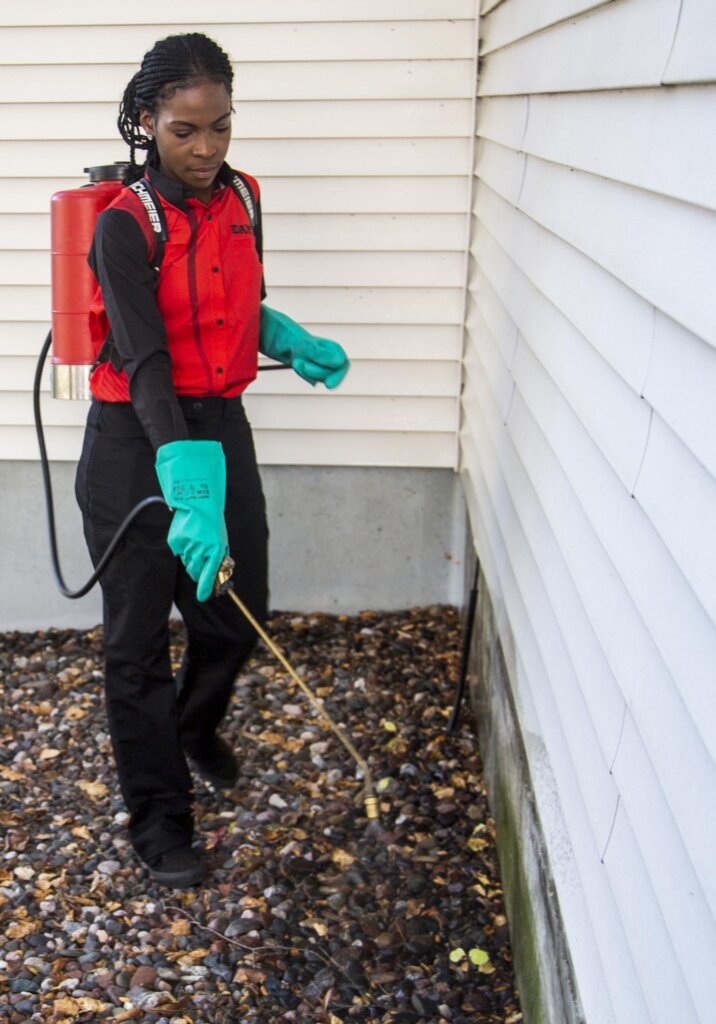Professional Extermination and Prevention Services by Pest Control Lockhart
Wiki Article
Discovering Infestation and Therapy Methods on the planet of Pest Control
The landscape of parasite control encompasses a myriad of difficulties, especially as invasions of typical family parasites continue to evolve. By integrating precautionary actions with innovative management techniques, such as Integrated Bug Monitoring (IPM), home owners can better safeguard their environments.
Typical Family Vermin
When it involves handling our space, understanding common home insects is vital. These parasites not just interrupt our convenience yet can likewise position wellness threats and damages property. The most prevalent household pests consist of ants, roaches, rats, termites, and bed insects.Ants, frequently seen foraging in kitchens, can infect food and establish large swarms. Rodents, consisting of mice and rats, can create architectural damages and carry conditions like hantavirus and salmonella.
Acknowledging the signs of these pests, such as droppings, nests, or attack marks, is vital for early treatment (Pest Control Lockhart). Proper hygiene practices, securing entrance factors, and preserving a clutter-free setting are efficient preventative measures. By determining these common family pests and comprehending their behaviors, house owners can take proactive actions to mitigate invasions, ensuring a much healthier living setting
Comprehending Parasite Infestations
Insect problems can escalate promptly, turning a minor aggravation into a considerable trouble if not attended to without delay. Understanding the nature of these invasions is crucial for efficient monitoring. Parasites can invade property and business rooms for various reasons, consisting of the look for food, sanctuary, or reproducing grounds. Common aspects adding to problems include poor cleanliness, structural susceptabilities, and seasonal adjustments that drive parasites indoors.Recognizing the sort of parasite is vital, as various types show different behaviors and reproductive prices. As an example, rodents may establish nests in surprise areas while pests like roaches thrive in damp atmospheres. Early discovery often depends upon identifying indications such as droppings, nibble marks, or unusual audios, which can show an issue before it comes to be extreme.
Cozy, humid environments can facilitate the fast development of pest populaces, while adjustments in landscaping or building and construction can inadvertently produce helpful environments. An educated strategy to understanding these dynamics lays the foundation for effective insect monitoring strategies in the future.
Therapy Approaches and Techniques
Efficient therapy approaches and techniques are vital for minimizing parasite infestations and bring back a risk-free setting. A complex method is commonly best, including chemical, organic, and mechanical strategies tailored to the particular bug and the extent of the problem.Chemical therapies consist of the use of insecticides and herbicides, which can efficiently get rid of insects. Nevertheless, appropriate application and adherence to safety and security standards are Continue critical to decrease threats to human beings and non-target microorganisms. Integrated Insect Management (IPM) encourages the wise use chemicals as a last option, counting rather on surveillance and threshold levels to identify treatment needs.
Organic control techniques include presenting natural killers or parasites to minimize pest populations. This method is significantly prominent, specifically in farming settings, as it advertises environmental sustainability.
Mechanical methods, such as catches and barriers, give instant remedy for bugs without introducing chemicals. Choices include sticky catches for insects or physical obstacles for rodents.
Eventually, the choice of therapy method must consider the specific bug, the environment, and prospective impacts on human health and wellness and communities. A well balanced combination of these methods can effectively handle problems while promoting long-lasting pest control options.
Safety Nets for Residence
Proactively addressing bug concerns before they intensify is essential for maintaining a healthy home atmosphere (Pest Control Lockhart). Applying effective precautionary actions can considerably minimize the chance of infestations, ultimately securing both your residential or commercial property and wellness
Proper landscape design additionally plays an essential duty in avoidance. Maintaining bushes and trees trimmed away from the home minimizes the possibilities of insects discovering their way indoors. Furthermore, ensure that drainage systems are operating successfully to avoid standing water, which can reel in mosquitoes and other insects.
Last but not least, regular evaluations are recommended. Routinely checking for indicators of bug activity permits early treatment. By adopting these preventive procedures, property owners can produce an atmosphere that is much less hospitable to pests, thus enhancing their overall top quality of life and lowering the demand for extensive insect control treatments.
Business Parasite Control Methods
A comprehensive informative post approach to business pest control is crucial for services aiming to preserve a secure and hygienic setting. Effective approaches involve a mix of regular assessments, staff member training, and the application of Integrated Parasite Management (IPM) techniques.Regular evaluations her explanation make it possible for early detection of parasite activity, enabling prompt intervention. Companies need to develop a routine timetable for these analyses, focusing on high-risk locations such as cooking areas, storeroom, and garbage disposal websites. Employee training is equally vital; team should be informed on the indications of parasite infestations and the significance of reporting them promptly.
Applying IPM practices helps reduce bug concerns sustainably. This consists of environment alteration, such as securing entry points and reducing clutter, in addition to utilizing natural deterrents before turning to chemical treatments.

Additionally, teaming up with a qualified parasite control provider ensures access to expert knowledge and advanced therapy alternatives. This collaboration can bring about tailored bug control prepares tailored to the particular requirements of business, decreasing dangers and improving general efficacy. Ultimately, an aggressive and enlightened technique promotes a pest-free environment, safeguarding both public wellness and organization track record.
Final Thought
In final thought, reliable insect control demands an extensive understanding of usual home parasites and their behaviors, combined with targeted therapy methods. Carrying out preventive procedures along with treatment methods such as Integrated Pest Management and biological control improves the ability to reduce invasions.Report this wiki page